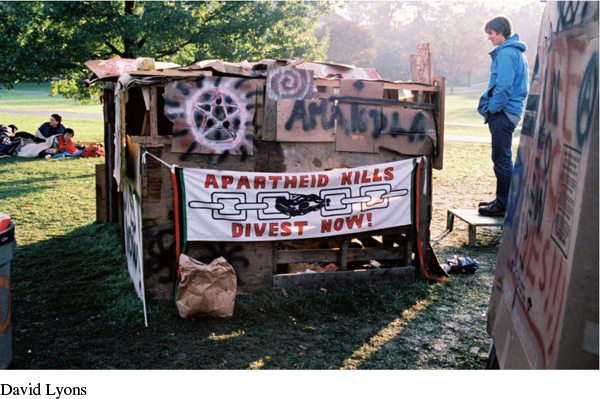Human Rights and the Fight against Communism
The Reagan administration extended its firm Cold War position throughout the world, emphasizing anticommunism often at the expense of human rights. The president saw threats of Soviet intervention in Central America and the Middle East, and he aimed to contain them. Reagan exploited the fear of communism in Central America and the Caribbean, where for nearly a century the United States had guarded its sphere of influence. During the 1980s, the United States continued its economic isolation of Cuba via the trade embargo, and it sought to prevent other Communist or leftist governments from emerging in Central America and the Caribbean.
In the late 1970s Nicaraguan revolutionaries, known as the National Liberation Front or Sandinistas, had overthrown the tyrannical government of General Anastasio Somoza, a brutal dictator. President Jimmy Carter, who had originally supported Somoza’s overthrow, halted all aid to Nicaragua in 1980 after the Sandinistas began nationalizing foreign companies and drawing closer to Cuba. Under Reagan, Secretary of State Shultz suggested a U.S. invasion of Nicaragua, reflecting the administration’s belief that the revolution in Nicaragua had been sponsored by Moscow. Instead Reagan adopted a more indirect approach. In 1982 he authorized the CIA to train approximately two thousand guerrilla forces outside the country, known as Contras (Counterrevolutionaries), to overthrow the Sandinista government. Although Reagan praised the Contras as “the moral equivalent of our Founding Fathers,” the group consisted of pro-Somoza reactionaries as well as anti-Marxist democrats who blew up bridges and oil dumps, burned crops, and killed civilians. In 1982 Congress, unwilling to support such actions, passed the Boland Amendment, which prohibited direct aid to the Contras. In the face of congressional opposition, Reagan and his advisers came up with a plan that would secretly fund the efforts of their military surrogates in Nicaragua. Reagan ordered the CIA and the National Security Council (NSC) to raise money from anti-Communist leaders abroad and wealthy conservatives at home. This effort, called “Project Democracy,” raised millions of dollars and by 1985 the number of Contra troops had swelled from 10,000 to 20,000. In violation of federal law, CIA director William Casey also authorized his agency to continue training the Contras in assassination techniques and other methods of subversion.
Elsewhere in Central America, the Reagan administration supported a corrupt right-wing government in El Salvador that, in an effort to put down an insurgency, sanctioned military death squads and killed forty thousand people during the 1980s. Despite the failings and abuses of the El Salvadoran government, Reagan insisted that Communist regimes in Nicaragua and Cuba were behind the Salvadoran insurgents. The United States sent more than $5 billion in aid to El Salvador and trained its military leaders to combat guerrilla forces.
While many Americans supported Reagan’s strong anti-Communist stance, others opposed to the president’s policy mobilized protests. Marches, rallies, and teach-ins were organized in cities and college campuses nationwide. U.S.-sponsored wars also drove many people to flee their dangerous, poverty-stricken countries and seek asylum in the United States. Between 1984 and 1990, 45,000 Salvadorans and 9,500 Guatemalans applied for asylum in the United States, but because the United States supported the established governments in those two nations, nearly all requests for refugee status were denied. Approximately five hundred American churches and synagogues established a sanctuary movement to provide safe haven for those fleeing Central American civil wars. Other Americans, especially in California and Texas, began to view the influx of refugees from Central America with alarm. This immigration, both legal and illegal, meant an increase in medical and educational costs for state and local communities, which taxpayers considered a burden.
In addition to financing guerrilla wars in Central America, on October 25, 1983, Reagan sent 7,000 marines to invade the tiny Caribbean island of Grenada. After a coup toppled the leftist government of Maurice Bishop, who had received Cuban and Soviet aid, the United States stepped in, ostensibly to protect American medical school students in Grenada from political instability following the coup. A pro-American government was installed. The swift action in Grenada boosted Reagan’s popularity.
Reagan’s eagerness to fight communism extended around the world, and his administration supported repressive governments in the Middle East, Asia, Latin America, and Africa. Reagan embraced the distinction made by his ambassador to the United Nations, Jeane Kirkpatrick, between non-Communist “authoritarian” nations, which were acceptable, and Communist “totalitarian” regimes, which were not. Reagan considered the South African government an example of an acceptable authoritarianism, even though it practiced apartheid (white supremacy and racial separation) and torture. The fact that the South African Communist Party had joined the fight against apartheid reinforced Reagan’s desire to support the white-minority, anti-Communist government. Interested in the country’s vast mineral wealth, Reagan opted for what he called “constructive engagement” with South Africa, rather than condemn its racist practices. The Reagan administration did so even as protesters across the United States and the world spoke out against South Africa’s repressive white-majority government and campaigned for divestment of public and corporate funds from South African companies. After years of pressure from the divestment movement on college campuses and elsewhere, in 1986 Congress passed the Comprehensive Anti-Apartheid Act, which prohibited new trade and investment in South Africa. President Reagan vetoed it, but Congress overrode the president’s veto.

Exploring American HistoriesPrinted Page 939
Exploring American Histories Value EditionPrinted Page 694
Chapter Timeline